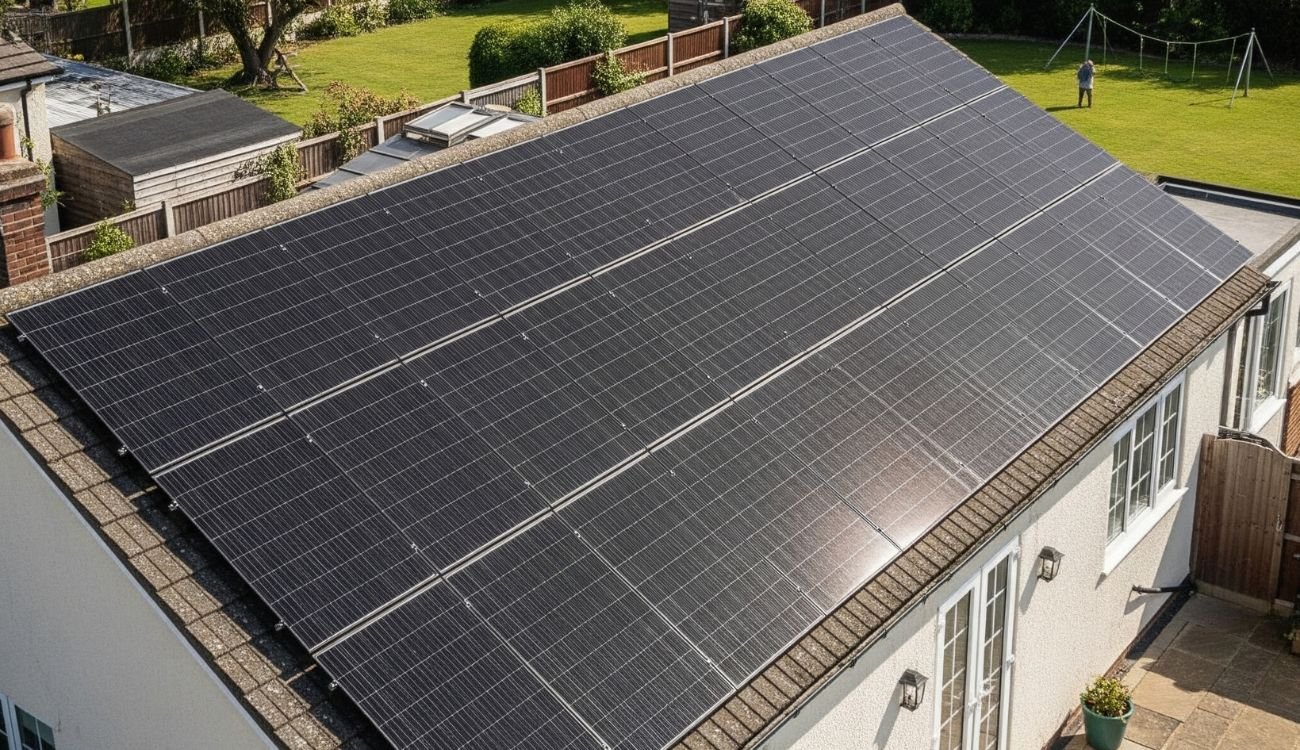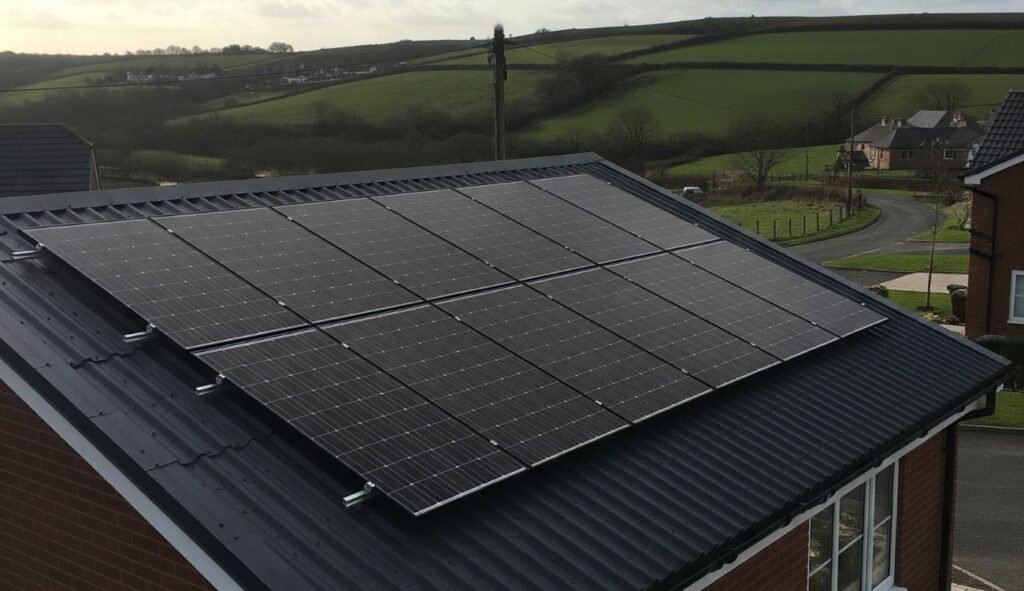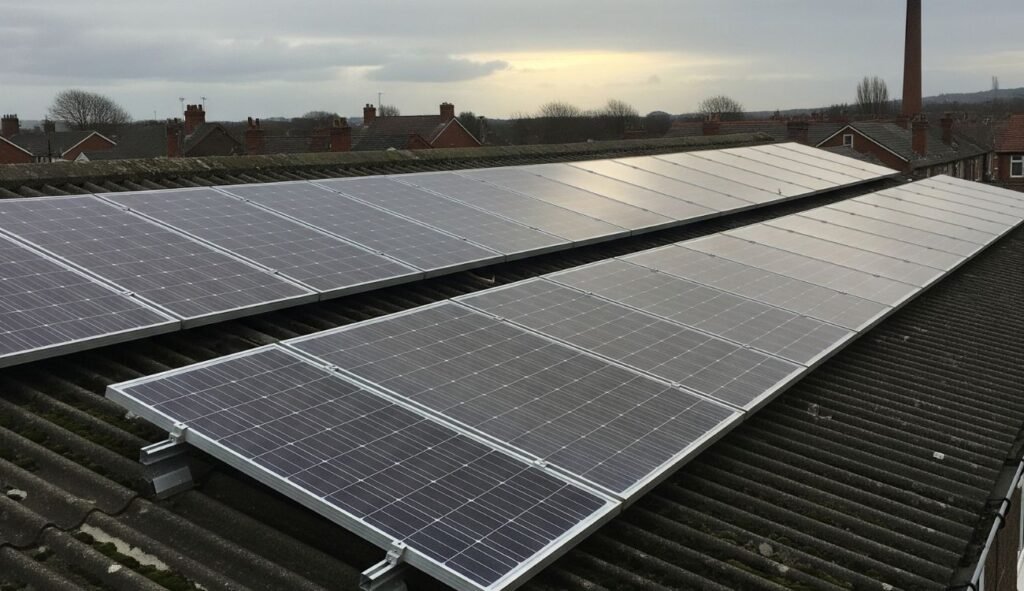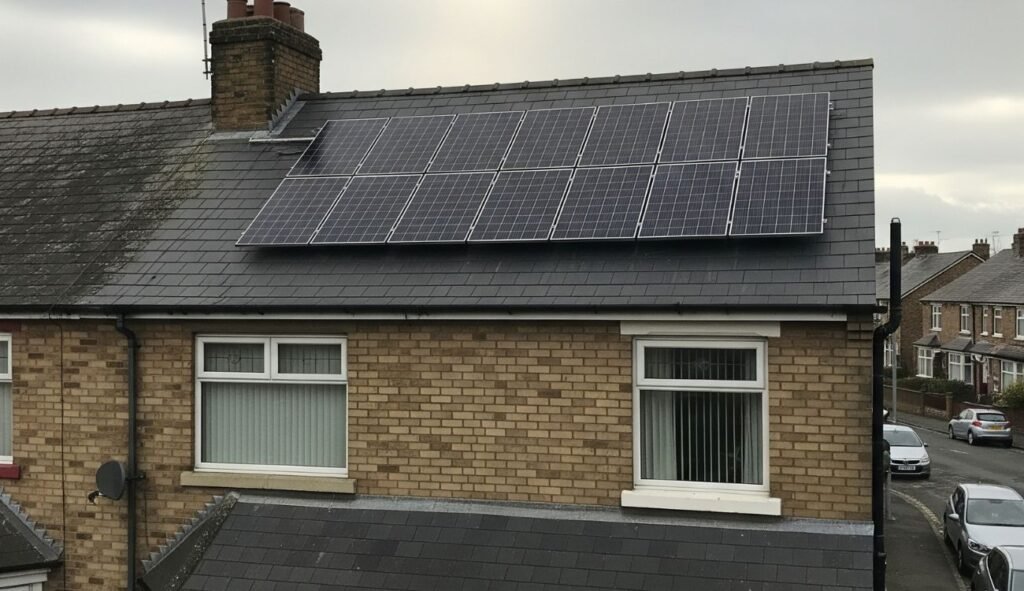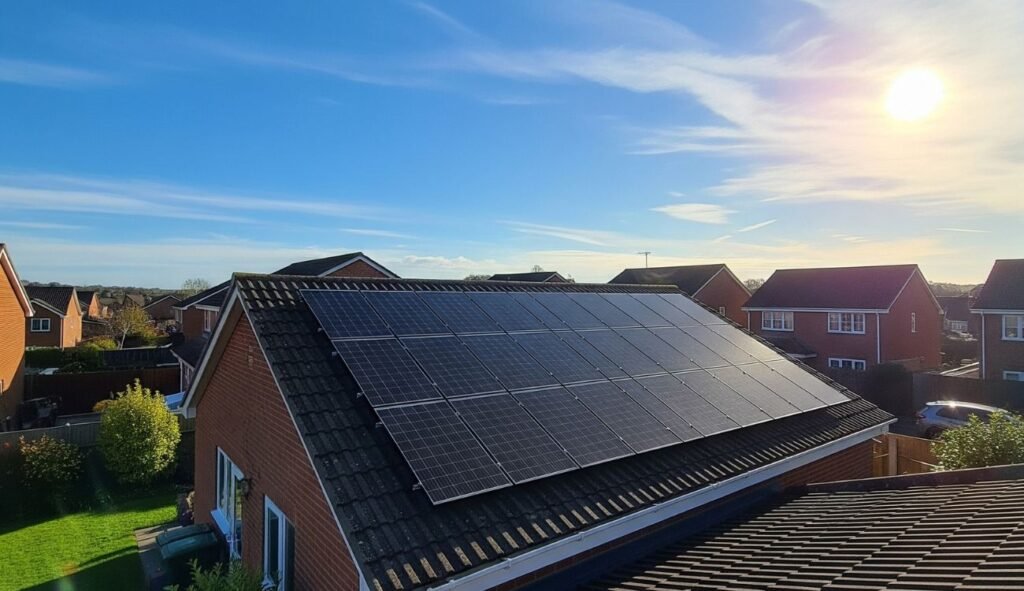If you’re a homeowner, landlord, or business owner in the UK considering solar panels to generate 1000 kWh per month, you’re likely looking to reduce energy bills and embrace renewable energy.
Determining how many solar panels you need for 1000 kWh per month depends on several factors, including your location, roof orientation, and panel efficiency.
This guide will break down the calculation process in simple terms, helping you make an informed decision about solar panel installation.
How Many Solar Panels Are Required to Produce 1000 kWh Per Month?
To generate 1000 kWh per month, or approximately 12,000 kWh per year, you need to consider the number of solar panels required based on their output, your location, and system efficiency.
On average, a UK household uses about 2,900 kWh annually, according to Ofgem, so 1000 kWh per month is significantly higher, often suitable for larger households, landlords with multiple properties, or commercial buildings.
What Factors Influence the Number of Solar Panels Needed?
Several variables affect how many solar panels you’ll need to achieve your energy goal:
- Sunlight Hours (Solar Irradiance): The UK’s sunlight hours vary by region. For instance, North East England averages 3.7–4.1 sunlight hours per day, slightly less than southern regions like the South East, which gets about 4.1 hours.
- Panel Wattage: Most residential solar panels in the UK have a power rating of 350–450 watts (W). Higher-wattage panels produce more electricity, reducing the number needed.
- Roof Orientation and Pitch: South-facing roofs with a 30–40° pitch are optimal for capturing sunlight, producing up to 15–20% more energy than east or west-facing roofs, per the Energy Saving Trust.
- System Efficiency and Derate Factor: Energy losses from shading, dirt, or inverter inefficiencies (known as the derate factor) typically reduce output by 15–20%.
- Panel Efficiency: Monocrystalline panels, common in the UK, have efficiencies of 15–24%, meaning they convert more sunlight into electricity compared to polycrystalline or thin-film panels.
How Do You Calculate the Number of Solar Panels for 1000 kWh Per Month?
To estimate the number of solar panels, follow this straightforward formula:
- Determine Annual Energy Needs: 1000 kWh per month × 12 months = 12,000 kWh per year.
- Account for System Losses: Assuming a derate factor of 85%, divide your annual energy needs by 0.85 to account for losses: 12,000 kWh ÷ 0.85 = 14,118 kWh.
- Estimate Solar Panel Output: In the UK, a 1 kW solar system produces approximately 850 kWh per year, according to the Energy Saving Trust. For North East England, this may be slightly lower (around 800 kWh) due to fewer sunlight hours.
- Calculate System Size: Divide the adjusted energy needs by the annual output per kW: 14,118 kWh ÷ 800 kWh/kW = 17.65 kW system size.
- Determine Number of Panels: Using 400W panels (a common choice), divide the system size by the panel wattage: 17.65 kW ÷ 0.4 kW = approximately 44 panels.
Here’s a table summarising the calculation for different panel wattages:
| Panel Wattage (W) | System Size (kW) | Number of Panels | Approx. Roof Space (m²) |
|---|---|---|---|
| 350 | 17.65 kW | 50 | 84–100m² |
| 400 | 17.65 kW | 44 | 74–88m² |
| 450 | 17.65 kW | 39 | 66–78m² |
Why Does Location in the North East of England Matter?
In the North East of England, including areas like Tyne and Wear and Newcastle, sunlight hours are slightly lower than in southern regions. England averages 4.1 sunlight hours daily, but the North East may see closer to 3.7 hours, particularly in winter.
This means you might need a few extra panels compared to southern households to achieve 1000 kWh per month.
For instance, a 400W panel in the North East produces about 1 kWh per day (400W × 3.7 hours ÷ 1000), requiring around 44–50 panels to meet your goal, depending on roof conditions.
Future Heat, a trusted solar installer in the North East, can assess your property’s sunlight exposure and recommend the optimal system size. Our MCS-accredited team ensures high-quality installations tailored to the region’s climate.
What Roof Characteristics Affect Solar Panel Requirements?
Your roof’s design plays a critical role in determining how many solar panels you need and how efficiently they’ll perform.
Is a South-Facing Roof Essential?
A south-facing roof at a 30–40° pitch maximises solar energy capture, producing up to 85% of a panel’s potential output under standard test conditions.
East or west-facing roofs yield 15–20% less energy, while north-facing roofs are not recommended, as they may produce 30% less, per Which?. If your roof isn’t south-facing, you may need additional panels to compensate.
How Does Shading Impact Performance?
Shading from trees, chimneys, or nearby buildings can reduce panel output. The Energy Saving Trust suggests using optimisers to minimise shading’s impact, ensuring shaded panels don’t affect the entire system.
A professional installer like Future Heat can conduct a site survey to identify shading issues and recommend solutions, such as micro-inverters, which are particularly effective for North East properties with variable sunlight.
How Much Roof Space Do You Need?
A 17.65 kW system with 44 panels (400W each) requires approximately 74–88 m² of roof space. For landlords or commercial property owners in the North East, larger roofs may accommodate more panels, reducing the per-panel cost.
How Do Solar Panel Types and Efficiency Affect the Number Needed?
Not all solar panels are created equal. The type and efficiency of panels you choose directly impact the number required.
What Are the Most Efficient Solar Panels?
Monocrystalline panels, with efficiencies of 15–24%, are the most common for UK homes due to their superior performance. Higher-efficiency panels generate more electricity in less space, reducing the number needed.
For example, a 450W monocrystalline panel requires fewer units than a 350W panel to achieve 1000 kWh per month.
Should You Consider Battery Storage?
Solar panels generate most electricity during the day, but household demand often peaks in the evening. A solar battery, costing £5,000–£8,000, can store excess energy for later use, reducing reliance on the grid, per the Energy Saving Trust.
For a 1000 kWh monthly goal, a battery can help maximise self-consumption, potentially reducing the number of panels needed by optimising energy use.
How Can You Maximise Savings with Solar Panels?
Investing in solar panels can significantly reduce energy bills and offer additional financial benefits.
What Are the Financial Benefits of Solar Panels?
- Energy Bill Savings: A 4 kW system can save £704 annually for a typical household. For 1000 kWh per month, savings could be higher, especially for commercial properties.
- Smart Export Guarantee (SEG): You can earn 10.8–15p per kWh for excess energy exported to the grid. In 2025, SEG payments can offset installation costs.
- Property Value Increase: Solar panels can boost property value by up to 6.8%, making them attractive for landlords.
- Government Incentives: The UK offers 0% VAT on solar installations until 2027, reducing costs by 20%, per GOV.UK.
How Can Future Heat Help North East Residents?
Future Heat, based in Tyne and Wear, specialises in solar installations across the North East. Our bespoke solutions consider local sunlight conditions, roof suitability, and energy needs. By choosing Future Heat, you benefit from:
- MCS Accreditation: Ensuring high-quality, certified installations eligible for SEG payments.
- Local Expertise: Tailored advice for North East properties, maximising efficiency in the region’s climate.
- Free Quotes: Get a no-obligation quote to understand costs and savings specific to your property.
FAQs
Can I Install Solar Panels on a Flat Roof?
Yes, solar panels can be installed on flat roofs using mounting systems with adjustable angles (30–50°) to optimise sunlight capture. Additional costs for ballasts or stands may apply, ranging from £500–£1,000, depending on the system size.
Are There Grants Available for Solar Panels in the North East?
The Energy Company Obligation (ECO4) scheme may cover up to 100% of solar installation costs for low-income households or those with electric heating.
How Often Do Solar Panels Need Maintenance?
Solar panels require minimal maintenance, typically light cleaning once or twice a year to remove dust or debris. Professional cleaning services in the North East cost around £100–£200 annually.
Can Solar Panels Power an Electric Vehicle?
Yes, a 17.65 kW system producing 1000 kWh per month can cover the energy needs of an electric vehicle (EV), which typically uses 2,000 kWh annually. Pairing with a battery ensures energy availability for nighttime charging.
How Long Do Solar Panels Last?
Solar panels have a lifespan of 25–30 years, though efficiency may decline by 0.5–1% annually, according to the Energy Saving Trust. Most come with a 20–25-year warranty, ensuring long-term reliability.
Our Verdict
Determining how many solar panels you need to generate 1000 kWh per month involves assessing your energy needs, roof characteristics, and local sunlight conditions.
For North East England residents, a system of approximately 39–50 panels (depending on wattage) is typically required, factoring in the region’s 3.7–4.1 daily sunlight hours. By choosing high-efficiency panels and considering battery storage, you can maximise savings and reduce reliance on the grid.
With financial incentives like 0% VAT and SEG payments, solar is a smart investment for homeowners, landlords, and businesses.
Myles Robinson is a seasoned expert in the boiler and home improvement industry, with over a decade of experience. He is deeply committed to environmental sustainability, actively promoting energy-efficient heating solutions to help households reduce their carbon footprint. By combining industry expertise with a dedication to environmental responsibility, Myles continues to lead efforts in transforming home heating practices towards a more sustainable future.

